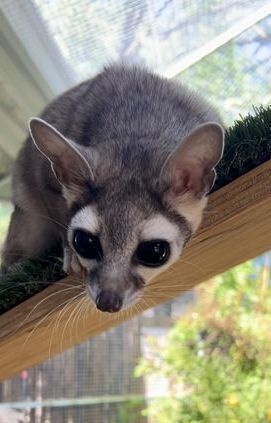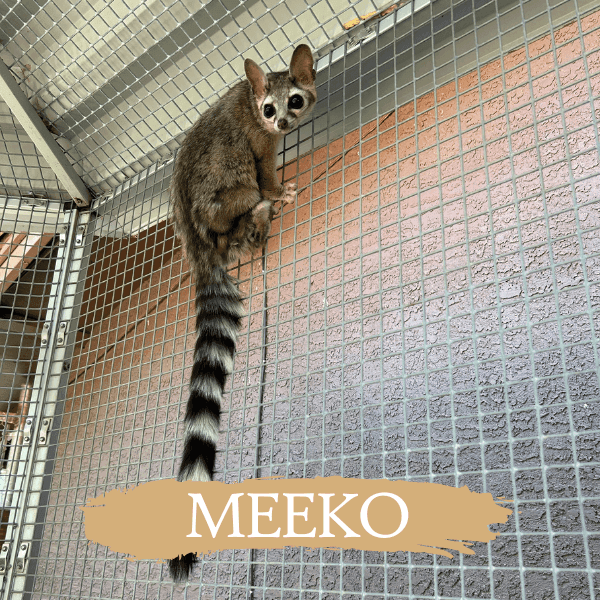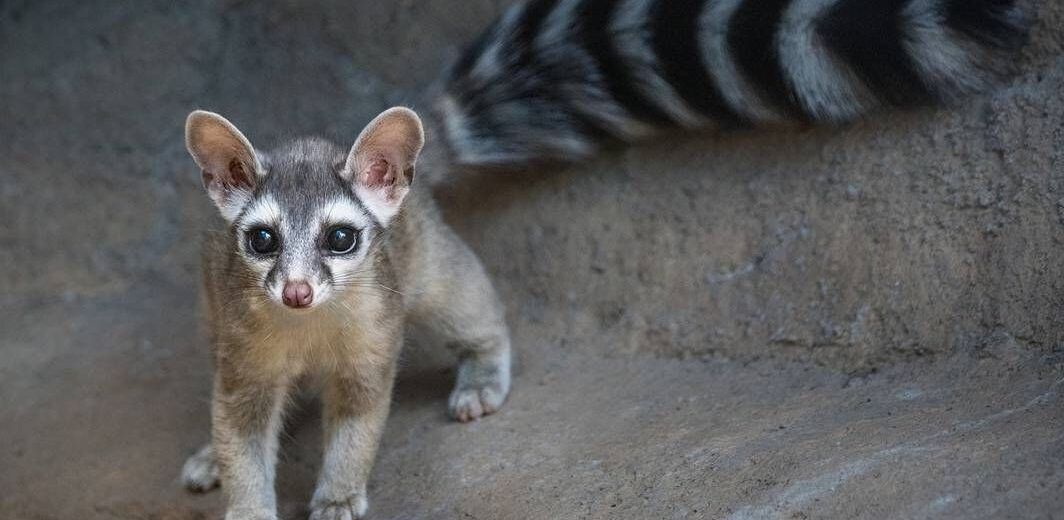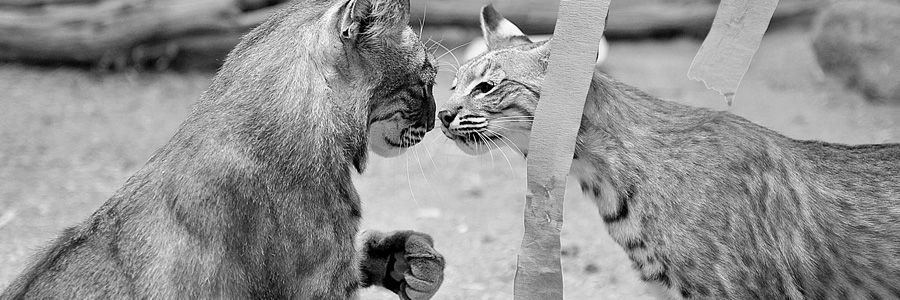RINGTAIL

Bassariscus astutus
- Habitat: The ringtail prefers to live in rocky habitats associated with water. These areas can include riparian canyons, caves, and mine shafts.
- Status: Least concern
- Population Trend: Unknown
- Diet: Ringtails are omnivores which means they will eat just about anything if it is the right size. Some of their food choices are fruit, insects, lizards, snakes, small mammals such as mice, woodrats, and squirrels, as well as birds and bird eggs
- Weight: 1 - 2 lbs.
- Size: 6" - 7" tall at ; 24" long. Their tails account for ~50% of their body length
- Lifespan: 6 - 9 years in the wild; up to 14 years in human care
- Interesting Facts:
- Ringtails are excellent climbers capable of ascending vertical walls, trees, rocky cliffs, and even cacti. They can rotate their hind feet 180 degrees, giving them a good grip for descending those same structures.
- In August 1986 the ringrail became the State Mammal of Arizona.
- Ringtails are sometimes wrongly called ringtail-cats or miners cats. They are not related to cats at all. Their relatives include the coati and the raccoon.
THE SOUTHWEST WILDLIFE RINGTAIL



